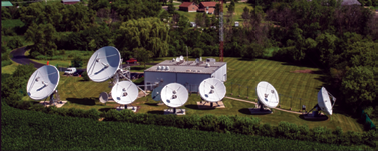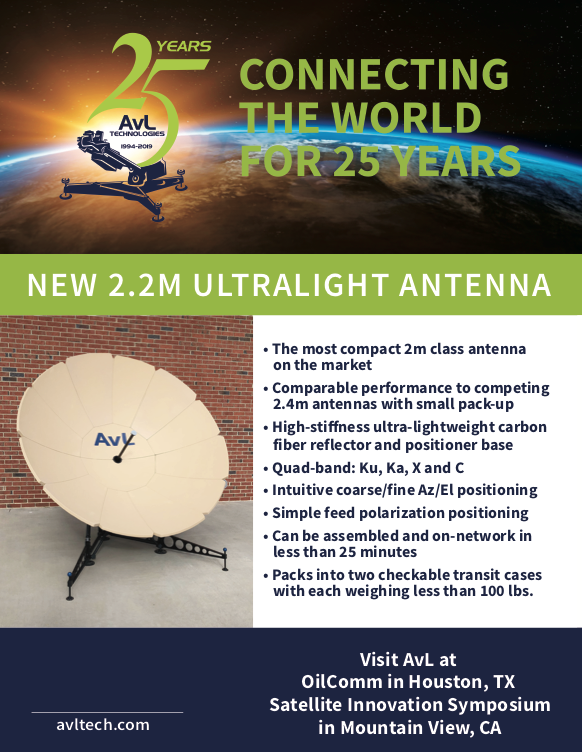MSUA
Isotropic Networks appears to be gaining new momentum in the SATCOM mobility market. This is the perfect time to get your insights and perspective on the company and the maritime business. Would you please give the readers a brief history on Isotropic Networks to include an understanding of the geographic and vertical mobility markets that is the focus of the company’s business?
Isotropic Networks appears to be gaining new momentum in the SATCOM mobility market. This is the perfect time to get your insights and perspective on the company and the maritime business. Would you please give the readers a brief history on Isotropic Networks to include an understanding of the geographic and vertical mobility markets that is the focus of the company’s business?

Melissa Orlick (MO)
Isotropic was founded in 1992 by my father, Hank Zbierski, and mother, Lynn Zbierski. The roots of the company were built by delivering live commodity trading content via satellite internet from the trading floors of the Chicago Board of Trade to rural farmers and Co-ops in the Americas.
From domestic communications for farmers, we stepped outside and started providing backup / redundant communication services for international retailers, corporations and metered communications for the oil & gas sector (land and sea) from the Gulf of Mexico to Africa to the Middle East.
The expansion into mobility started with our command vehicle service offerings for emergency responders, international corporations and world recognized insurance firms. In the last six years we have seen significant growth in our maritime sector, where my team and I have driven the vertical forward from servicing a handful of boats to now over 100 vessels operating on our network in the Continental US, Northwest Passage, Antarctica, Mediterranean, and the South Pacific.
Our existing mobility verticals are here to stay along with consistent growth forecast. For us, vertical focus and successful delivery is one of our foundations of our success. With travelers expecting internet as a right rather than a service we are seeing the mobility markets in Rail and Aero surge which is why we are working with a number of flat-panel/low-profile antennas which will suit the new verticals ahead.
As a company, we have taken a very careful approach not to overreach as we have learned through recent market changes that not being overly reliant on one vertical is key to ensure longevity.
MSUA
How is your business evolving with the increasing user demand for higher throughput, lower cost, anytime, anywhere communications?
MO
Like many players in the mobility and satellite market, we too have seen a significant increase in client’s request for more data. And of course, more for less.
With the new advances in technology at the teleport and remote sites we’ve been able to run an efficient and nimble network to provide clients’ more bang for the buck, such as on-demand streaming packages at extremely competitive rates and flexible terms so clients can use higher speeds when they need it, not when they don’t. This provides clients with budget savings as bandwidth is now used appropriately.
MSUA
Given your focus on maritime, how would you describe the state of the maritime market for satellite mobility communications and what mobility innovations are you and your customers most enthused about?
MO
Specifically, the yachting market is optimistic, from Boat International’s latest Global Sales Book, over 830 superyachts measuring 24 meters + are under construction or on order and there’s a resurgence in the 46 to 60 meter sector.
At the new build phase or major refit periods this is when we see clients most enthused on new technologies as they have an open mindset and budget to set their onboard network up with the latest equipment and service. Their yacht will be able to adapt to current and future trends and services whether this be with antennas that can be upgraded from one satellite band to another or a modem able to accommodate mid-level bandwidth speeds to higher speeds and configurations down the road. The comfort in knowing their onboard equipment and service provider can service them and now and in to the future is key to landing and keeping business.
We see the changes that are coming within the next 12 to 24 months in regard to LEO technology. We are working very closely with some of the larger providers of this emerging service to ensure that we are extremely well positioned so that we can make sure our clients have a seamless path to take advantage of any innovative services.
MSUA
Does the promise of new broadband LEO systems and low-cost nexgen terminals complicate purchase decisions that users need to be making today?
MO
The fact of the matter is, there will never be enough bandwidth to supply the planet’s needs. LEO makes sense in so many ways. With ease of installation and ability to transfer data through space optically there will no longer be “footprint” boundaries.

The Isotropic Networks teleport in Lake Geneva, Wisconsin.
Overall the LEO constellations are going to be a game changer and Isotropic will be well positioned as we are planning on providing earth station services for one or two of the proposed constellations.
MSUA
As you know, user experience has taken on new levels of importance across many industries, including satcom. How do you see demand changing in the yacht market and what is IN doing to address this challenge?
MO
The importance in the yachting market is the initial contact to installation, service and post-sales support. The demand for more bandwidth at a lower cost is a large factor in providing / proposing services, but as the saying goes “the bitterness of poor quality remains long after the sweetness of low price is forgotten.
The challenge is blending favorable rates with outstanding service and support, which we do successfully. There will always be a company out there with a lower rate, but will they be able to provide the support and quality of service that is not only required but demanded in such a niche industry.
In addition to the best in class service we provide, we continue to expand coverage and increase bandwidth availability in popular cruising zones as well as in new destinations. For example, we not only expanded bandwidth on our existing satellite’s, such as E36B in the Med and E115WB in the Northwest Passage (to a full 54MHz transponder), but we’ve ensured coverage is planned or already in place for the new frontiers and destinations yachts and passenger vessels are traveling to (such as Nordic or Antarctica regions).
MSUA
Are you aware of any adjacent market technologies or business processes that are helping drive new demand for satellite mobility services?
MO
Always on connectivity no matter the location is our focus for mobility. With the changing courses of command vehicles or vessel cruising destinations, being able to provide clients service, support and coverage wherever their business or pleasure takes them continues to drive us to be tuned in to how our services are meeting their future demands.
As we are so connected these days to our phones and other portable devices no matter where we go, they are by our side. With this we’ve seen significant increase in iCloud/cloud-based usage. With this demand we’ve been driven to implement our own specialized data management and reporting program to assist with onboard application usage. In addition we’ve partnered with a number of specialized network teams to manage onboard communications through Kerio or Cisco based systems.
MSUA
Most of the satellite operators are beginning to talk about offering other forms of wireless technology besides satellite and a few of them have already diversified their connectivity and/or networking offering. Do you see this happening at the Service Provider level? If so, what opportunities and challenges is this shift posing?
MO
We certainly see the need for evolving wireless solutions, We currently work with our partner to provide cellular services to our yacht clients which supplements both cellular and traditional VSAT very well. It provides costs savings to the client and a better overall onboard experience.
In addition, we are forming technology partnerships with some of the largest players in the industry (VT iDirect — using their leading iQ LTE technology, and now offering Iridium’s Certus platform).
MSUA
Are there any other trends in the satellite mobility industry or maritime market that are having an impact on today’s business?
There is the expectation that clients should get the same speeds and user experience via satellite as they do on land via fiber connection. This is requiring the evolution of new applications, hardware and re-evaluating bandwidth allocation.
Applications continue to drive the need for speed. As an example, during the NBA Finals this year, we had several clients (from the Med to the Caribbean) request to increase speeds and capacity to their yachts so they could watch the games in real time (live). As the applications continue to grow the need for flexible, on-demand services will continue to blossom.
With growing requests for more speed and new applications, there is the ongoing concern of internet security. Clients are re-evaluating how their internet security is set and how it should be managed. With the increase of hacks and spamming internet security has no longer just been a topic but a call to action.
We are working with clients and fleet managers to understand their security requirements and work with our assurance partners to set clients up with the proper on-board security and protocols.
MSUA
Melissa, how did you get involved in the satellite industry and what aspect of the business — or your role — do you find most engaging?
MO
It’s a family business, so in some ways I’ve always been a part of the satellite industry. But seven years ago, I took a leap from my broadcasting role at CME Group and jumped in to craziness by joining the family. And I haven’t looked back since.
As the satellite industry never sleeps as its constantly evolving and reinventing itself every day and every year is new, working with clients, and our dealer network to make certain their needs and requirements are not only met but exceeded in this changing and demand industry is the most engaging for me.
This interview is courtesy of MSUA and is republished with the organization’s permission.

President of the Mobile Satellite Users Association, Catherine Melquist spearheads the group’s mission to promote mobility market development and mobility innovation. With more than 25 corporate and small business members representing all levels of the satellite value chain as well as end-users, MSUA collaborates with conference organizers around the world to facilitate panels and keynote speakers that decipher mobility market dynamics including: growth opportunities, strategic partnership, barriers to progress, application aspirations, adjacent market influences and more.
Catherine is a strategic marketer with more than two decades of experience developing marketing and public relations strategies for global companies in the satellite and space-based market.
Catherine is the principal strategist at CAM & Company, a boutique marketing practice offering a cost-effective, ready-to-go alternative to resourcing an in-house marketing team or contracting with a traditional marketing firm.


